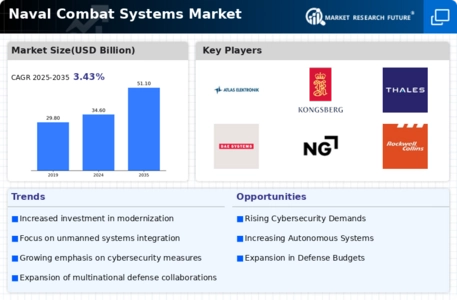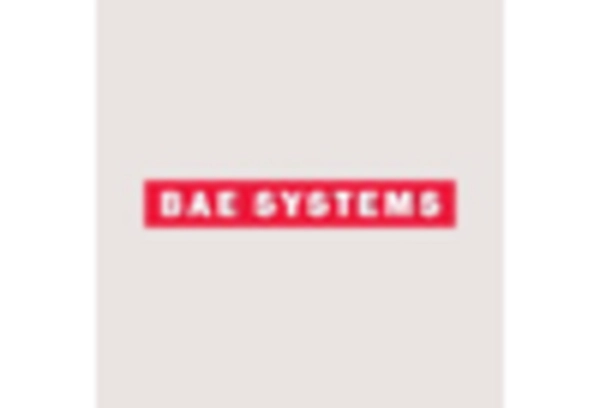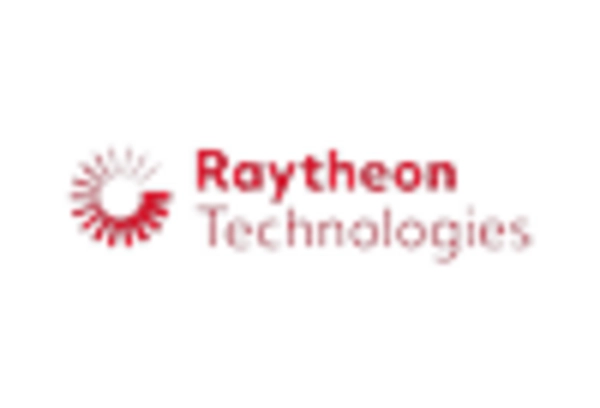Market Share
Naval Combat Systems Market Share Analysis
The Naval Combat Systems market is witnessing significant trends that reflect the evolution of maritime warfare and the efforts of naval forces to enhance their capabilities in response to emerging threats. One prominent trend is the integration of advanced sensors and artificial intelligence (AI) into Naval Combat Systems. As navies seek to improve situational awareness and response times, the incorporation of sophisticated sensors and AI-driven analytics enables real-time data analysis, threat detection, and decision-making. This trend reflects the growing importance of information superiority in naval operations and the pursuit of more intelligent and responsive combat systems.
Interoperability and networking capabilities are emerging as crucial trends in the Naval Combat Systems market. Navies are increasingly emphasizing the need for combat systems that can seamlessly integrate with other naval assets and operate in joint and coalition environments. The trend towards interoperability enables navies to create a networked and collaborative maritime force, enhancing their collective capabilities in complex operational scenarios. This trend aligns with the evolving nature of modern naval warfare, where coordinated and networked operations are essential for mission success.
Unmanned systems are playing a significant role in shaping the trends of Naval Combat Systems. The integration of unmanned aerial vehicles (UAVs), unmanned surface vessels (USVs), and underwater drones enhances naval capabilities for reconnaissance, surveillance, and mine countermeasures. The trend towards unmanned systems reflects the naval forces' pursuit of more flexible and adaptable solutions, reducing the risk to human operators and extending the reach and endurance of naval operations.
Anti-access/area denial (A2/AD) capabilities are driving trends in Naval Combat Systems. As potential adversaries invest in A2/AD strategies to limit the operational reach of naval forces, there is a corresponding trend in developing countermeasures. Naval Combat Systems are evolving to include advanced missile defense systems, electronic warfare capabilities, and strategies for overcoming A2/AD challenges. This trend underscores the importance of naval forces adapting to the changing threat landscape and developing counter A2/AD capabilities to maintain their operational freedom.
The trend towards modular and scalable Naval Combat Systems is gaining prominence. Navies are seeking systems that can be easily upgraded and adapted to accommodate new technologies and emerging threats. The modular approach allows for the integration of new sensors, weapons, and software updates without the need for extensive overhauls. This trend addresses the demand for cost-effective and agile solutions, providing naval forces with the flexibility to evolve their capabilities over time.
Cybersecurity is emerging as a critical trend in the Naval Combat Systems market. As naval systems become increasingly digitized and interconnected, there is a growing concern about the vulnerability to cyber threats. The trend towards prioritizing cybersecurity involves the implementation of robust measures to protect naval combat systems from cyberattacks, ensuring the integrity and reliability of critical maritime assets. This trend reflects the recognition of the cybersecurity challenges inherent in modern naval operations.
The trend towards directed energy weapons (DEWs) is gaining traction in the Naval Combat Systems market. DEWs, including laser and electromagnetic weapons, offer advantages in terms of precision, speed of light engagement, and cost-effectiveness. Navies are exploring the integration of DEWs as part of their naval combat systems to enhance their offensive and defensive capabilities. This trend signifies a shift towards more advanced and futuristic technologies within naval warfare.
Naval Combat Systems are increasingly incorporating green technologies and energy-efficient solutions as a prominent trend. The maritime industry is aligning with global efforts to reduce environmental impact, and navies are exploring eco-friendly alternatives for their combat systems. The trend towards environmentally sustainable naval combat systems involves the adoption of energy-efficient propulsion, reduced emissions, and the integration of renewable energy sources, contributing to the overall sustainability of naval operations.

















Leave a Comment